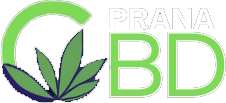“Oral vs top” refers to the comparison between oral administration (ingesting through the mouth) and topical application (applying to the skin or surface). This distinction is often made in the context of medications, skincare, or supplements, where the method of use significantly impacts effectiveness.
Oral intake typically involves swallowing a pill, liquid, or capsule, allowing the substance to be absorbed through the digestive system. In contrast, topical application involves directly applying a substance to the skin, where it is absorbed locally or systemically, depending on the formulation.
Why is Oral vs Top Important?
Understanding the differences between oral and topical applications is crucial because:
1. Absorption Rates Vary
Some compounds are more effective when taken orally, while others work best when applied topically.
2. Targeted vs. Systemic Effects
Topical applications often provide localized relief, whereas oral intake affects the entire body.
3. Side Effects and Safety
Certain ingredients may cause irritation on the skin when applied topically but are safe when taken orally (and vice versa).
4. Convenience and Compliance
Some people prefer oral medication due to ease of use, while others find topical solutions more practical.
Why is Oral vs Top Trending?
Several reasons have contributed to the growing popularity of this debate:
1. Rise in Skincare and Dermatology Trends
More people are exploring whether to use oral supplements or topical creams for skincare issues like acne, aging, and hydration.
2. Advancements in Medicine
New research and innovations have improved the effectiveness of both oral and topical treatments, making the comparison more relevant.
3. Personalized Health Solutions
With the rise of customized healthcare, people are more interested in which method suits their specific needs.
4. Fitness and Wellness Industry Growth
Supplements, pain relief treatments, and performance enhancers often come in both oral and topical forms, sparking discussions on their effectiveness.
Benefits of Oral vs Top
Oral Administration Benefits
- Systemic Absorption – Provides full-body effects, making it suitable for internal conditions.
- Longer Duration of Action – Often lasts longer in the body compared to topical treatments.
- Easier Dosing – Precise measurements in tablets or capsules ensure consistent dosage.
- Convenience – Easy to take with water without requiring direct application.
Topical Application Benefits
- Targeted Action – Works directly on the affected area without affecting the entire body.
- Fewer Side Effects – Lower risk of systemic reactions since it bypasses the digestive system.
- Faster Relief – Often provides quick relief for localized pain, skin issues, or inflammation.
- Non-Invasive – No need to swallow pills or undergo medical procedures.
Why Use Oral vs Top?
Choosing between oral and topical applications depends on several factors:
- Condition Being Treated – Internal issues like infections, deficiencies, or systemic pain often require oral medication, while external concerns like skin conditions or muscle pain are better suited for topical treatments.
- Speed of Action Required – Topical applications usually provide immediate relief, while oral treatments might take longer to take effect.
- User Preference – Some individuals may prefer swallowing a pill rather than applying a cream or vice versa.
- Side Effect Considerations – People with sensitive stomachs may opt for topical applications to avoid digestive discomfort.
Common Uses of Oral vs Top
Oral Usage Examples
- Medications – Antibiotics, painkillers, and anti-inflammatory drugs.
- Supplements – Vitamins, minerals, and herbal extracts.
- Beauty and Wellness – Collagen, biotin, and probiotics for skin and hair health.
- Pain Management – Oral painkillers such as ibuprofen or acetaminophen.
Topical Usage Examples
- Skincare Treatments – Anti-aging creams, acne gels, and moisturizers.
- Pain Relief – Muscle relaxants, pain relief patches, and anti-inflammatory gels.
- Wound Healing – Antiseptic creams, antibiotic ointments, and burn treatments.
- Hair Growth Solutions – Scalp treatments and hair serums.
Oral vs Top: Which One Should You Choose?
Making the right choice between oral and topical applications depends on multiple factors:
- For Chronic Conditions: Oral treatments tend to work better for long-term health concerns.
- For Quick Relief: Topical applications provide faster results for localized issues.
- For Internal Health: Oral supplements are more effective in addressing nutritional deficiencies.
- For Skin and Muscle Problems: Topical solutions are ideal for targeted action.
Are There Any Risks?
Both methods have potential risks, which should be considered before use:
Oral Risks
- Gastrointestinal Issues – Some oral medications cause stomach upset or nausea.
- Drug Interactions – Oral medications may interact with other drugs, leading to unwanted side effects.
- Overdose Risk – Higher chances of consuming an incorrect dosage.
Topical Risks
- Skin Reactions – Some people may experience rashes, irritation, or allergies.
- Limited Absorption – Some topical treatments may not penetrate deep enough to be effective.
- Frequent Reapplication – Effects may not last as long as oral treatments.
Conclusion
When it comes to oral vs top, the best choice depends on the condition being treated, individual preferences, and potential side effects. While oral treatments offer systemic benefits, topical applications provide localized relief. Understanding the strengths and limitations of each can help make informed decisions for better health and well-being.
Also Read: Scalp Micropigmentation: A Comprehensive Guide
Future of Oral vs Top Treatments
With continuous advancements in healthcare, both oral and topical treatments are evolving. Some trends to watch for include:
1. Nano-Technology in Skincare
Enhancing absorption of topical treatments.
2. Personalized Medicine
Customized treatments based on individual health data.
3. Sustainable and Natural Products
A shift toward eco-friendly and chemical-free formulations.



